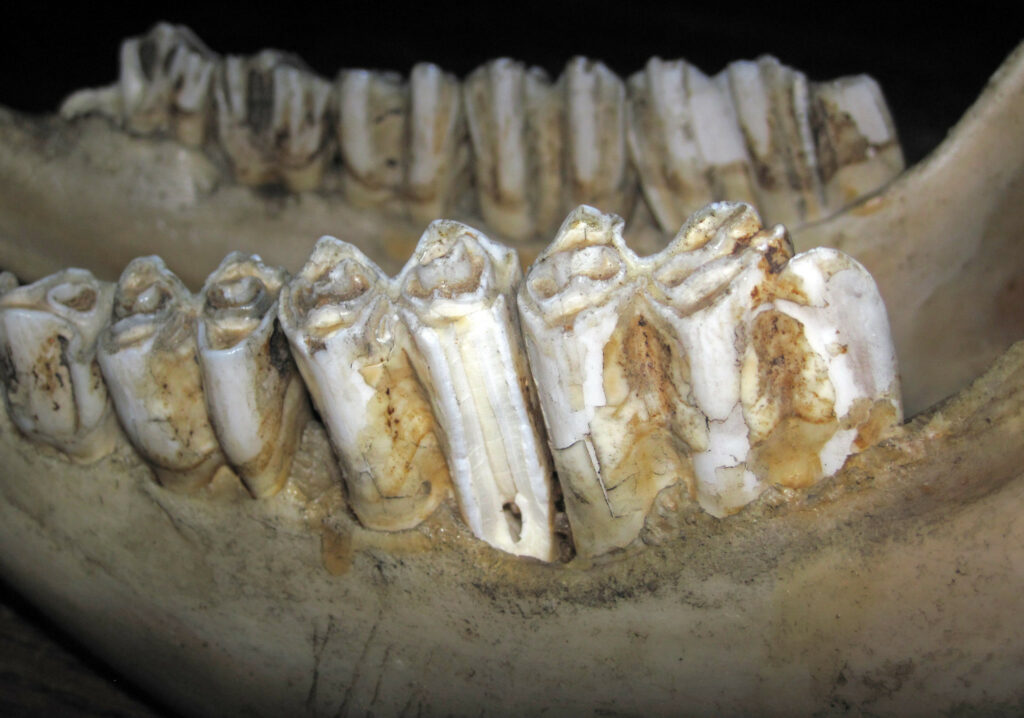
Teeth and particularly narwhal tusks are getting some unusual press recently when one of them was the weapon of choice to fend off the London Bridge attacker, which was a good choice according to Harvard dental researcher Dr. Martin Nweeia. Turns out that narwhal tusks have some pretty amazing physical features. They exhibit both extreme strength and flexibility at the same time. The narwhal is known as the unicorn of the sea, a pale-colored, medium-sized whale found in Arctic coastal waters and rivers. In males, the more prominent tooth grows into a sword like, spiral tusk up to 8.8 feet long.
Changes in the shape of teeth over time can tell us about climate change. Adaptations in horse teeth 55 million years ago from North America were observed and caused by changes in climate, favoring different food sources. The horses changed their diets from fruit to more favorable grasses and their teeth changed in response. For this same reason, the teeth of elephants adapting in different environments of Asia and Africa have different tooth forms. Both eat plants but Asian elephants, with more ridges on their teeth, eat larger amounts of grasses while African elephants, with wider spread ridges, eat more leaves.
Teeth have been used to link land mass theories like the Bering Land Strait Theory, hypothesizing that North America and Asia were once one land mass. The teeth shape and form of people on both sides of the Bering Land Bridge shared a common “mongoloid dentition” with unique features. And so, can the narwhal tusk tell us something about a changing Arctic? Scientists have discovered that the narwhal tusk is a giant sensory organ that is able to continually monitor its environment and has the ability to detect ice formation, and melt, both capabilities helpful for surviving in a changing Arctic.
**********
–Earth Wise acknowledges script contribution from Dr. Martin Nweeia of Harvard University.
Web Links
Fossil teeth reveal new facts about a mass extinction 260 million years ago
From the Horse’s Mouth: Teeth Reveal Evolution
Photo, posted April 3, 2019, courtesy of James St. John via Flickr.
Earth Wise is a production of WAMC Northeast Public Radio.
Leave a Reply